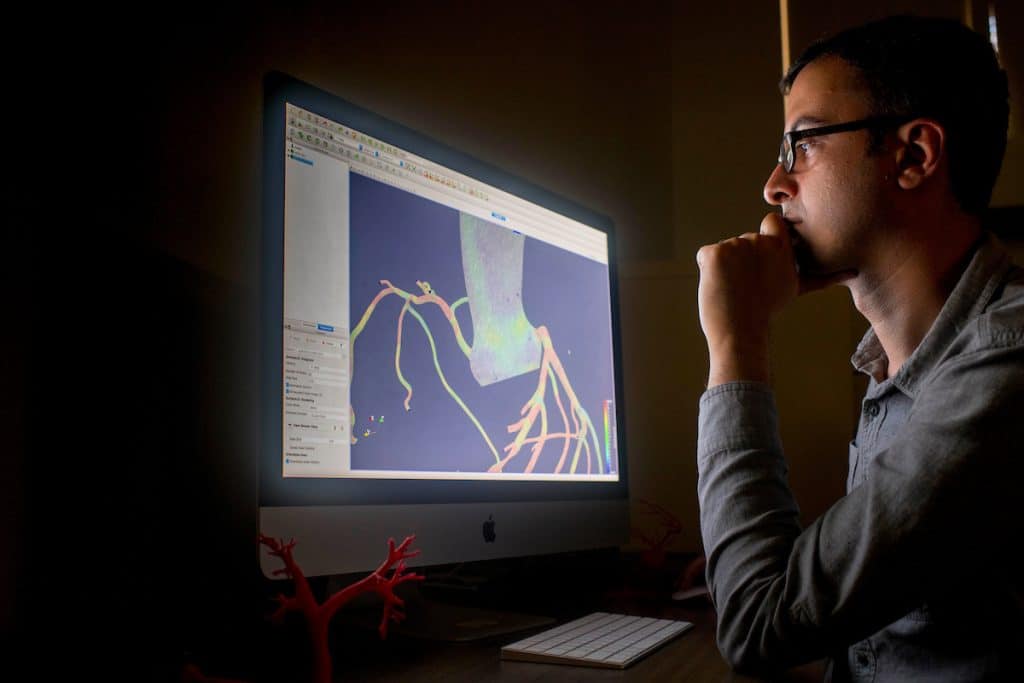According to the American Heart Association, cardiovascular disease remains the leading cause of death in the U.S.—higher than all forms of cancer and lung disease combined. Hemodynamics, how blood circulates throughout the body, are believed to play a major role in the progression of heart disease.
One of the most powerful tools clinicians use in the treatment of cardiac patients is hemodynamic monitoring, which assesses blood volume and pressure, blood flow and oxygen in the blood, revealing the severity of a patient’s disease. The more accurate these assessments are, the better the clinician can treat the patient.
A longstanding debate in the field of cardiovascular fluid mechanics is whether computational modeling of blood that is Newtonian (following Newton’s law of viscosity) or non-Newtonian (not following Newton’s law of viscosity) is more accurate when applied to hemodynamic monitoring. Northern Arizona University researcher Amirhossein Arzani, assistant professor of mechanical engineering and affiliated faculty of the Center for Bioengineering Innovation, is the author of a paper recently published by the Royal Society of London in its journal Interface that he hopes will end the debate once and for all.
“Current mathematical models of non-Newtonian blood flow in large arteries solely rely on shear rate and ignore flow stagnation,” Arzani said. “In this study, we propose a novel mathematical model that accounts for both shear rate and flow stagnation in the viscosity of blood. Our results suggest that blood does not behave as a strongly non-Newtonian fluid in large diseased arteries. Our paper questions the validity of non-Newtonian blood rheology models that are commonly being used in the literature.
“We hope that this paper puts an end to the debate around Newtonian vs. non-Newtonian modeling. We have so many other aspects of modeling that need to be resolved. We hope scientists will move on to solving some of these other problems.”
Arzani, who came to NAU in 2017 from the University of California, Berkeley, leads a research team studying the mechanisms behind initiation and progression of different cardiovascular diseases, developing computational models that can capture the multiscale and multiphysics nature of cardiovascular disease. The team’s work spans a variety of disciplines, including computational fluid dynamics, computational nonlinear structural mechanics, mass transport, dynamical systems, medical imaging, systems biology and multiscale modeling.
In Arzani’s Cardiovascular Biomechanics Lab, the team’s research blends engineering, computer science, applied mathematics and cardiovascular medicine using advanced computational tools, including Monsoon, NAU’s high-performance computing cluster, where the team runs most of their simulations.
Arzani and his team collaborate widely, working with clinicians at Stanford University, a radiologist at the University of Colorado, engineers at institutions including Texas A&M University and scientists in Europe and the United Kingdom.
Arzani soon will begin applying his computational modeling expertise to lung disease in collaboration with scientists at Northeastern University and the University of Minnesota.
Kerry Bennett | Office of the Vice President for Research
(928) 523-5556 | kerry.bennett@nau.edu




